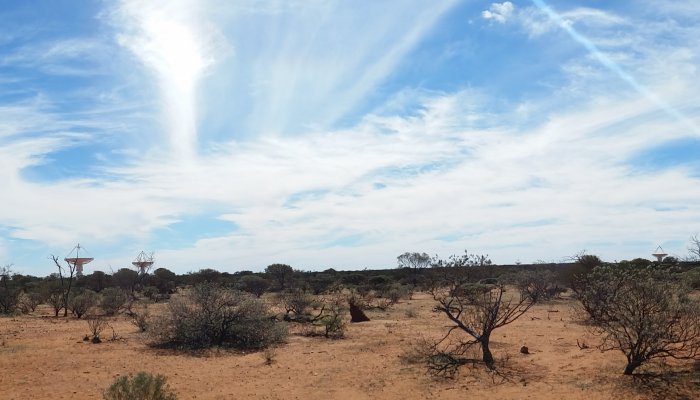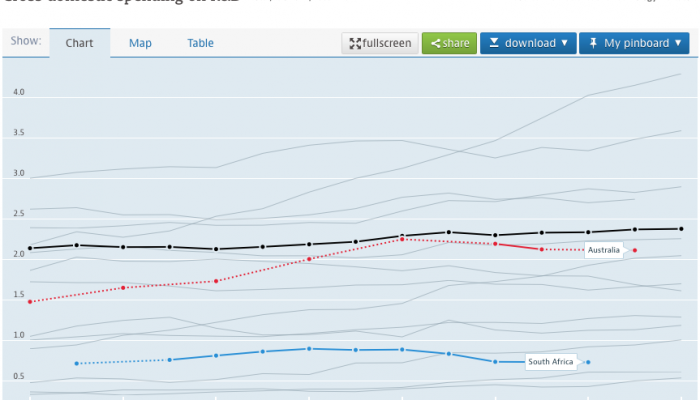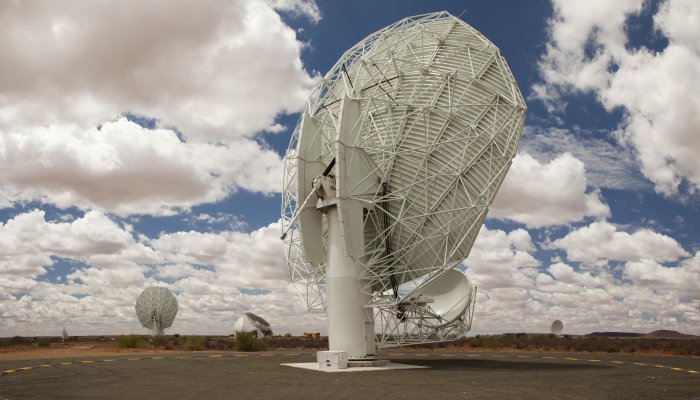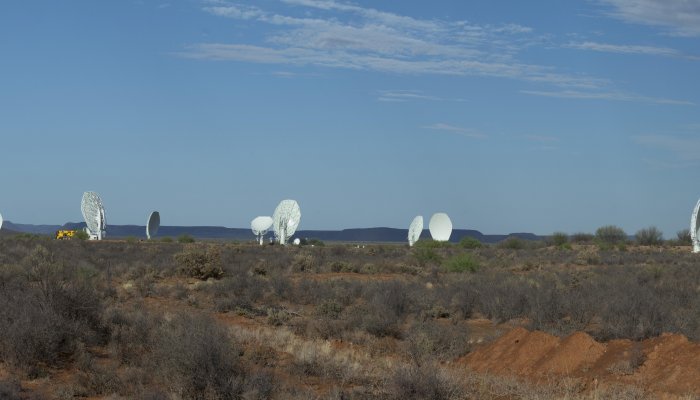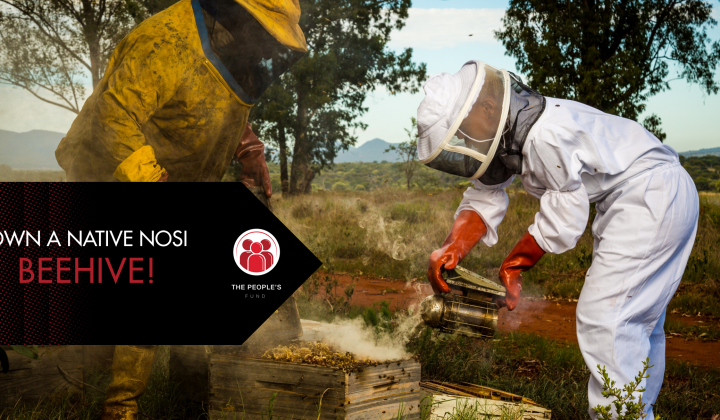A list of Australia's science and research focus areas looks very similar to what you would see in South Africa: supercomputing and big data, marine science, astronomy, nuclear research, mining technologies, climate change, and biodiversity, among others. But the major difference is one of scale – Australia simply has more money.
South Africa's annual National Survey of Research and Experimental Development 2013-14, which was released last month, was underwhelming. The country failed to spend 1% of its gross domestic product (GDP) on research and development (R&D) – the percentage has sat at 0.73% for the last three years – and its target of 1.5% by 2019 seems increasingly unattainable.
“It is clear that the country needs to significantly increase investment and growth in R&D,” the Department of Science and Technology (DST) said in a statement, following the release of the report. The department is responsible for driving science and technology – and thus R&D – in the country.
In total, the country – which includes government, business, science councils, higher education institutions and the not-for-profit sector – spent R25.7-billion on R&D in 2013-14. At constant 2010 Rand values, this was a 1.4% increase on 2012-13.
However, this is dwarfed by Australia's R&D spend. In 2013-14, the country spent A$33.5-billion (R386.5-billion) on R&D, with business accounting for the lion's share. This is just over 2.1% of GDP, substantially more than South Africa.
Government-led
While there are many areas of research crossover – not least of all astronomy, with Australia and South Africa jointly hosting the Square Kilometre Array (SKA), which will be the largest radio telescope in the world – the way that this research is organised is slightly different.
The main driver of R&D in South Africa's government is the DST. This department is responsible for the National Research Foundation, which oversees research at higher education institutions and funds postgraduate students, and the Council for Scientific and Industrial Research, which is the largest scientific research institute on the continent.
According to the 2016 national budget, this relatively small department, which was established in 2002, has been allocated R7.43-billion for 2016-17, R7.56-billion for 2017-18 and R7.76-billion for 2018-19.
“The amounts are reasonable,” DST director-general Dr Phil Mjwara said when the budget was announced earlier this year. “We're happy that at least the budget is still around R7.5-billion. There are [departments] that have lost several billion in their budget. In the entire context [of South Africa's economic situation], we're also contributing to belt tightening.”
The 2013-14 R&D figures did yield some good news, though: “This is the first year since 2008-09 that the business sector has shown a positive year-on-year change in R&D expenditure…. The largest increase in business-funded R&D since before 2009-10 also occurred in 2013-14,” the report's authors write.
In 2013-14, business spent R10.6-billion on R&D. But that was not enough for business to topple government from its status as biggest funder of R&D, a position which it has held since 2012-13. Government accounted for 42.9% and business 41.4% in 2013-14.
Business-led
Australian business, on the other hand, spent A$18.8-billion (R206.8-billion) on research in 2013-14, according to the Australian Bureau of Statistics. This is almost double what its government spent, at A$9.9-billion (R108.9-billion).
The Australian government's science agenda is strongly orientated towards business. For example, its DST-equivalent is called the Department of Industry, Innovation and Science.
Melbourne-based Philip Dalidakis, the minister of small business, innovation and trade for the state of Victoria, said: “Innovation policy is everything, not just technological. It is when you do something more efficiently than you did before. There is no limit to what innovation should be. It's about having the right infrastructure at the bottom, which allows those companies in those different fields to flourish.”
But his portfolio is heavily focused on commercialisation, rather than research. “No disrespect to the men and women who are running around in their little white lab coats doing research thinking they're saving the world, everything that I do as a minister will have a commercialisation focus.”
Commercialisation
Commercialisation of knowledge is an issue in all countries – including Australia – but South Africa feels it keenly since most of its R&D personnel are based in universities. In 2013-14, there were just under 41,500 R&D personnel within the higher education sector, more than double the 17,600 in business.
Although South Africa has promulgated legislation to ensure that researchers flag possibly patentable research, the reality is that commercialisation is not the focus of an academic institution.
South Africa and Australia both have R&D tax incentive schemes to encourage business to do R&D, but South Africa's is still trying to garner support.
South Africa's incentive offers qualifying companies a 150% tax deduction on the operational costs of R&D. However, between its inception in 2006 and the middle of last year, fewer than 1,000 companies had applied, and the applications of about 190 had been approved. Businesses complain that the process is too slow and bureaucratic, and the scheme is currently under review in an effort to improve its efficacy.
In Australia, this incentive translates into a 45% refundable tax offset on R&D spend for a company with a turnover of less than A$20-million which is in a tax-loss situation. For other eligible companies, this could be a 40% non-refundable tax offset. According to the latest budget statements, in 2015-16 R&D tax incentives cost the Australian government A$4.7-million (R51.7-million).
The SKA-effect
The order of magnitude difference between the South African research system and Australia's explains the surprise – still present in Australia – that both countries were selected to host the SKA.
Australia has been a world leader in radio astronomy since it began converting its radar systems – a part of Allied defences during World War Two – into radio telescopes. While South Africa also had expertise in radar, until 2007 its only radio telescope was at the Hartebeeshoek Radio Astronomy Observatory. In 2007, the country began building prototype telescopes to showcase its radio astronomy engineering ability.
But in 2012, the international SKA Organisation, the entity co-ordinating the pre-construction of the telescope, decided to split the site of the SKA between Australia and South Africa, following what was – for the science community – a relatively fraught bid campaign.
The SKA, which will comprise thousands of dishes and antennas in Australia and on the African continent, will attempt to answer some of science and humanity's most baffling questions, such as: is there life on other planets, how to galaxies form, and what is dark matter?
It will be the largest scientific instrument on Earth, and the most expensive. Initial estimates put the radio telescope at more than €2-billion. The first phase, known as SKA 1, is capped at €650-million, with construction planned to begin in 2018.
In the run up to the decision, both Australia and South Africa built precursor telescopes to show their scientific and engineering capability. South Africa's 64-dish MeerKAT telescope is being built, with 16 dishes to be unveiled at the end of this month (June). The 36-dish Australian SKA Pathfinder (Askap) is currently being commissioned. Both countries have developed “radio quiet” sites to host these telescopes. South Africa's in the Northern Cape, while Australia's is in the Shire of Murchison in Western Australia.
However, while MeerKAT will form part of SKA 1 – with another 133 dishes planned in addition to the 64 dishes that will be on the ground at the beginning of next year – Askap will not. Australia will, instead, host about 130,000 dipole antennas, which look like 6ft-tall Christmas trees built out of thick wire. This was another blow for a country that thought it was a shoe-in to host the entirety of the SKA.
Australian officials maintain that they have a “no regrets” policy with regards to the construction of Askap, although there is no guarantee that this precursor will be included in the SKA.
“Big science is expensive,” says Peter Klinken, chief scientist for the state of Western Australia, where their portion of the SKA will be built. The amounts required for the SKA are “not that stunning” when compared to Australia's science and research budget, he says. He estimates the total amount put into radio astronomy by the state and the commonwealth government at A$850-million (R9.35-billion).
South Africa, however, holds up astronomy, and the SKA, as a flagship project and geographic advantage focus area. It is considered a high-skills area of science, with the ability to boost technical development and skills in the country. In comparison to the science undertaken during apartheid, such as munitions and uranium enrichment, radio astronomy is a relatively benign science to fund with government money.
The MeerKAT's price tag is about R2-billion, but there are other funding boosts, such as astronomy research chairs in universities and the establishment of the Inter-University Institute for Data Intensive Astronomy, among others. This makes the country's total spend on astronomy difficult to quantify. It is, however, less than R9.35-billion.
Wrongs of the past
But perhaps the most fundamental difference between the South African and Australian research system is one of redress. South Africa's science policies are geared towards human capital development and including previously disadvantaged people in a system that has historically been white and male.
The latest available figures show that academia in South Africa still has a long way to go before it is representative of the country's population. Black women, the largest demographic group in South Africa, accounted for 12% of the total number of humanities, social science and natural science researchers in universities in 2013-14. White men held the largest percentage at 28%, followed by white women (27%) and black men (18%). Indian men and women (both at 4%) and Coloured men and women (both at 3%) held substantially lower percentages.
While this is an issue in South Africa, it does not appear to be one in Australia's science, research and innovation space. There is a push to achieve parity for women in research positions in Australia, but inclusion of aboriginal peoples within the science system is not flagged as a high priority.
When asked if there were quotas regarding the inclusion of Aboriginal people in science, Dalidakis said: “No. At this white settlement, we were very good at killing off indigenous Australians.”
While Dalidakis' comments cannot be extrapolated to the whole of Australia, that government's Indigenous Advancement Strategy's five priority areas are jobs, land and economy; children and schooling; safety and wellbeing; culture and capability; and remote Australia strategies. Science, research and innovation are not included.


